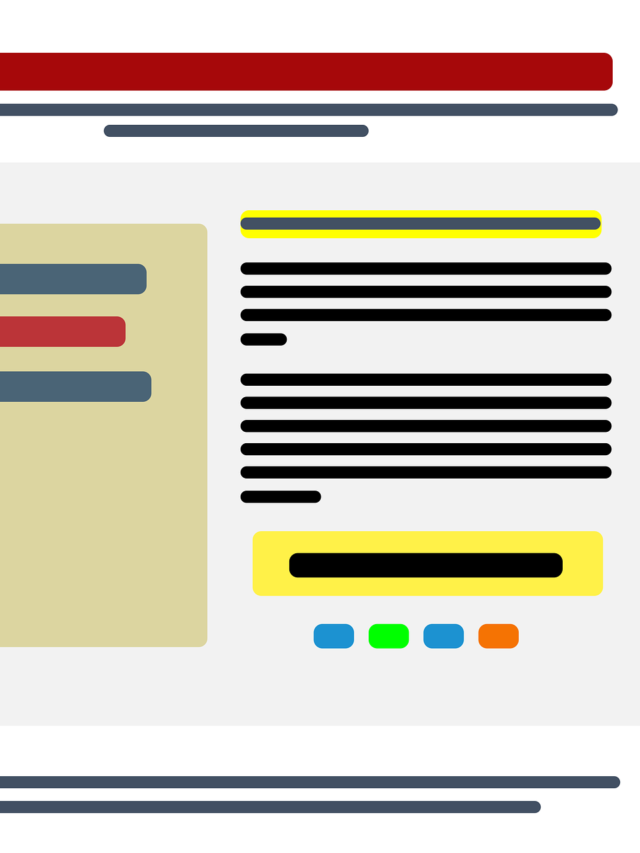Latest Google Ads Update: Auto-Pause of Low-Activity Keywords Starting in June 2024

In a bid to enhance advertising efficiency and streamline campaign management, Google Ads is set to roll out a significant update affecting advertisers worldwide. Starting in June 2024, Google Ads will implement an auto-pause feature for low-activity keywords. This update aims to optimize ad spend by automatically pausing keywords that exhibit minimal activity, ensuring advertisers allocate their resources effectively. Let’s delve deeper into the details of this update and its potential impact on advertising strategies.
What does Google Ads update entail?
The auto-pause feature will analyze the performance of keywords within Google Ads campaigns. Keywords that show little to no activity over a specified period will be automatically paused by the system. This move is aimed at preventing wasted ad spend on keywords that fail to generate meaningful engagement or conversions.
How will Google Ads work?
Google Ads will monitor the performance metrics of keywords, including impressions, clicks, and conversions, over a predetermined timeframe. Keywords that fall below a certain threshold of activity will trigger the auto-pause mechanism. Advertisers will receive notifications informing them of the paused keywords and the reasons behind the action.
Benefits of auto-pausing low-activity keywords:
- Cost Savings: By pausing keywords that demonstrate low effectiveness, advertisers can avoid wasting budget on underperforming elements of their campaigns. This reallocation of funds can lead to a more efficient use of advertising resources.
- Improved Performance: Removing irrelevant or ineffective keywords can enhance the overall performance of campaigns. With fewer distractions, ad groups can focus on high-performing keywords that drive meaningful results such as clicks, conversions, and revenue.
- Time Efficiency: Manually monitoring keyword performance and deciding which ones to pause can be a time-consuming task for advertisers. The auto-pause feature automates this process, saving advertisers valuable time that can be allocated to other aspects of campaign optimization.
- Enhanced Relevance: Pausing low-activity keywords ensures that ads are only displayed to audiences likely to engage with the content. This improves the relevance of ads, leading to higher click-through rates (CTR) and better ad placement.
- Simplified Campaign Management: With the auto-pause feature in place, advertisers can enjoy a more streamlined campaign management process. Instead of manually reviewing and adjusting keywords, they can rely on Google Ads’ automation to optimize their campaigns.
Potential considerations and best practices:
- Monitor Campaign Performance: While the auto-pause feature can streamline campaign management, it’s essential for advertisers to regularly monitor their campaigns’ overall performance. This includes reviewing key metrics such as CTR, conversion rate, and return on ad spend (ROAS) to ensure that the campaign objectives are being met.
- Keyword Relevance: Prioritize relevance when selecting keywords for your campaigns. Conduct thorough keyword research to identify terms that align with your target audience’s intent and interests. This proactive approach can help minimize the likelihood of keywords being paused due to low activity.
- Adaptation and Optimization: Stay agile and be prepared to adapt your advertising strategy in response to changes in the digital landscape. Continuously optimize your campaigns by testing new keywords, ad creatives, and targeting parameters to maximize performance.
- Utilize Negative Keywords: In addition to monitoring and optimizing your active keywords, leverage negative keywords to exclude irrelevant search terms and improve campaign targeting. Negative keywords help prevent ad impressions for searches unlikely to result in conversions, thereby conserving ad spend.
- Communication with Clients or Stakeholders: For agencies or advertisers managing campaigns on behalf of clients or stakeholders, clear communication regarding the auto-pause update is crucial. Educate clients about the rationale behind the update and reassure them that it’s aimed at improving campaign performance and efficiency.
Key Takeaways
The auto-pause of low-activity keywords represents a significant advancement in Google Ads’ efforts to enhance advertising effectiveness and streamline campaign management. By automatically pausing keywords that demonstrate minimal activity, advertisers can optimize their ad spend, improve campaign performance, and simplify their workflow. Embracing this update, along with implementing best practices in campaign optimization, will empower advertisers to achieve their marketing objectives more efficiently in an ever-evolving digital landscape.
FAQs: Google Ads Auto-Pause of Low-Activity Keywords
The auto-pause feature is a new functionality implemented by Google Ads, starting in June 2024, which automatically pauses keywords within campaigns that exhibit minimal activity over a specified period. This feature aims to optimize ad spend by preventing advertisers from allocating resources to keywords that generate little to no engagement or conversions.
Google Ads will monitor the performance metrics of keywords, including impressions, clicks, and conversions, over a predetermined timeframe. Keywords that fall below a certain threshold of activity will trigger the auto-pause mechanism. Advertisers will receive notifications informing them of the paused keywords and the reasons behind the action.
As of the current update, Google Ads does not provide an option for advertisers to opt-out of the auto-pause feature. However, advertisers can manually reactivate paused keywords if they believe there is potential for improvement or if the keywords align with their campaign objectives.
Advertisers can proactively manage their campaigns to minimize the likelihood of keywords being auto-paused. This includes selecting relevant keywords aligned with the target audience’s intent, regularly monitoring campaign performance, and optimizing ad creatives and targeting parameters to improve engagement and conversions.
Yes, advertisers will receive notifications from Google Ads when keywords are auto-paused due to low activity. These notifications will include details about the paused keywords and the reasons behind the action. Advertisers can review these notifications within their Google Ads account dashboard.







